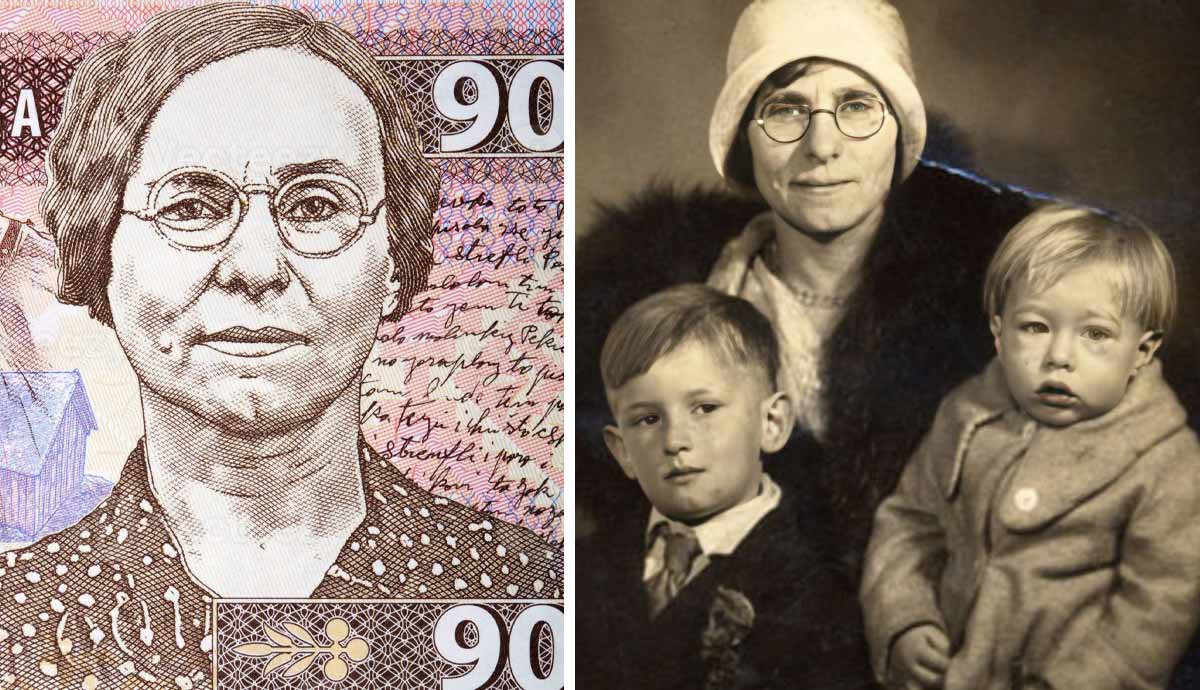
Arguably the most influential figure in Andy Warhol’s life, Julia Warhola had an intimately close relationship with her son from childhood long into adulthood, when the pair lived together in New York City. Her distinctive, stylized calligraphy adorned Warhol’s early illustration work, while her “secret kitchen workshop” of art made from cut out food cans may well have shaped Warhol’s own interests in the ordinary ephemera of daily life, including coke bottles, soup cans and dollar bills. We take a look at the life of this remarkable woman who led a rich and creative life.
Julia Warhola Was Born in Czechoslovakia

Julia Warhola was born as Julia Zavacky in Mikova, Czechoslovakia (now Slovakia) in 1892. Her family were strict Catholics of Carpatho-Rusyn descent and practiced a series of creative endeavors, including music, dance, and art, in keeping with the styles of their Eastern European heritage. From a young age Julia enjoyed drawing and crafts, a passion that she carried with her into adulthood. She emigrated to Pittsburgh in the United States in 1921, following her marriage to Ondreij Warjola.
Mother to Four Children

While living in the United States, Julia Warhola gave birth to four children, however, her daughter Mary only lived for 33 days. Meanwhile she had three sons, Paul, John, and Andy, with Andy being the youngest of them all. The family remained in Pittsburgh, and were raised as Byzantine Catholics. They were also an immensely creative household thanks to Julia’s influence – she encouraged her children to share her passion for traditional Rusyn folk songs, and traditional crafts. She recognized Andy’s talents early on, and Warhol fondly remembered the impact she had on his early creative endeavors, remembering, “She’d give me a Hershey bar every time I finished a page in my coloring book.”
Life with Andy in New York

In 1951, following the death of her husband, Julia Warhola moved to New York to live with her youngest son, where he was now known as Pop artist Andy Warhol. There she produced the decorative calligraphy for Warhol’s early work as an illustrator and graphic designer, in her distinctive looping, delicate style. She also quietly and studiously worked on a series of her own ventures, and won several awards for her skillful lettering.
Julia Warhola’s calligraphy on the album cover for The Story of Moondog, earned her a prize from the American Institute of Graphic Arts. She became a great enduring source of support and comfort for Andy, as Gerald Malanga noted, “Of all the people who spent any time with him over a period of years, Julia was the one who was there every day regardless of what happened.” The pair had a home overrun with 25 cats, all of whom, bar one, were called Sam.
A Close Mother-Son Bond

Julia’s calligraphy famously appeared in Warhol’s book dedicated to their large family of cats, titled 25 Cats Named Sam and One Blue Pussy. Julia also illustrated a remarkably similar book named Holy Cats in 1957, which combined her mutual enduring interests in both angels and cats, drawn with her playful, whimsical and light-hearted style. Yet she saw herself as a mother first, even signing the book as “by Andy Warhol’s mother”. Together, Warhol and his mother clearly shared a creative synergy that benefitted one another’s creativity. Warhol clearly held his mother in high regard, and she came to feature in many of his artworks including films and prints as a tender, enduring presence. Julia also practiced embroidery, and made sculptures from paper and tin cans, fueling the creative environment of the home she shared with Andy.
Final Year in Pittsburgh

Julia Warhola spent the last year and a half of her life in a nursing home in Pittsburgh, away from Andy, as she became increasingly frail. He paid for the home and phoned her every day, yet he still felt some guilt about sending her away, given how much of their lives they had spent together. After Julia’s passing Warhol made several portraits of his mother, including a series of paintings titled Julia Warhola, from 1974, which, with their expressionistic marks and warm, subdued colors, pay homage to this remarkable woman who so profoundly impacted his life.







